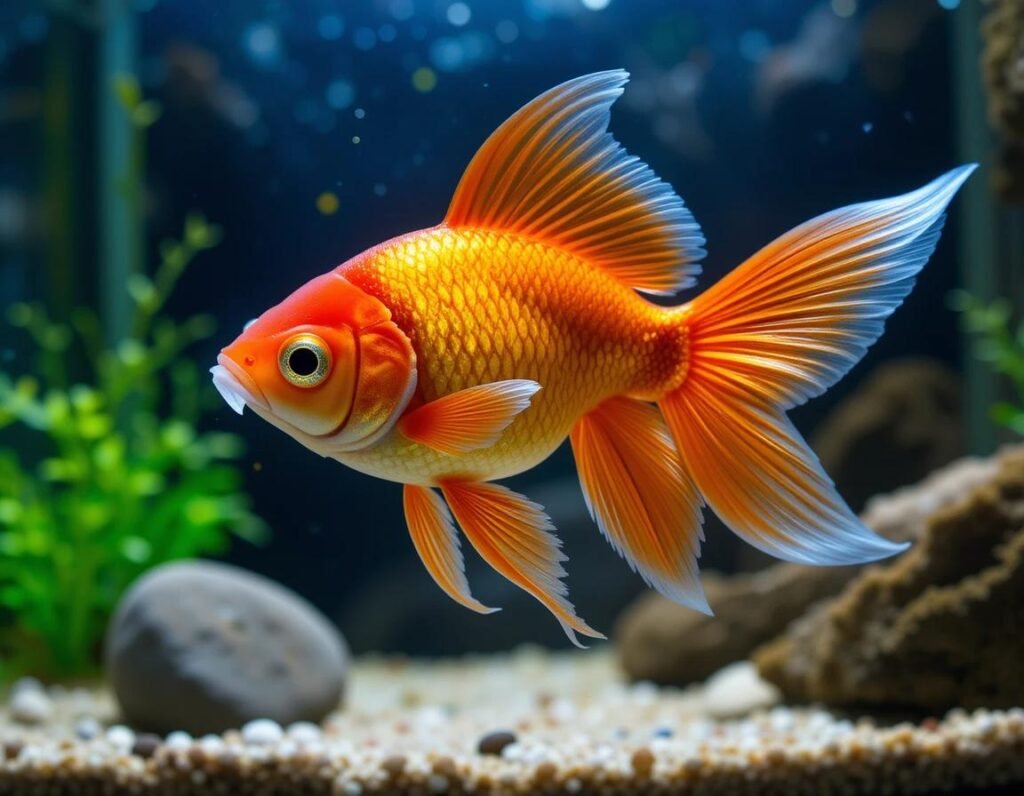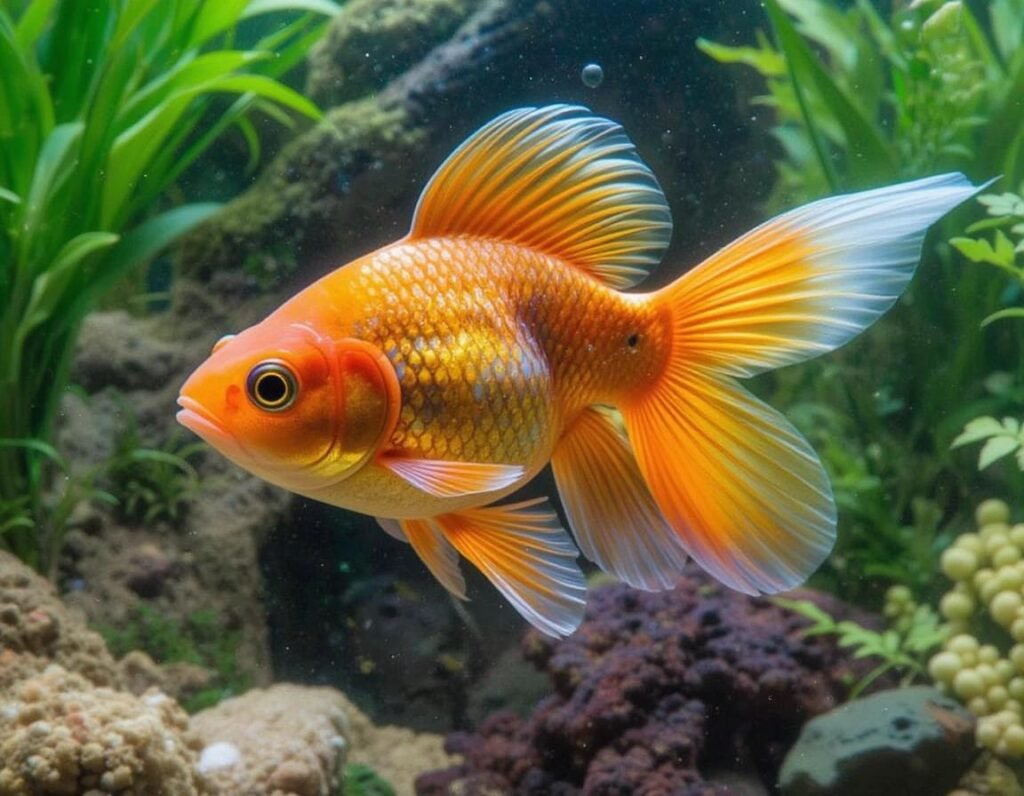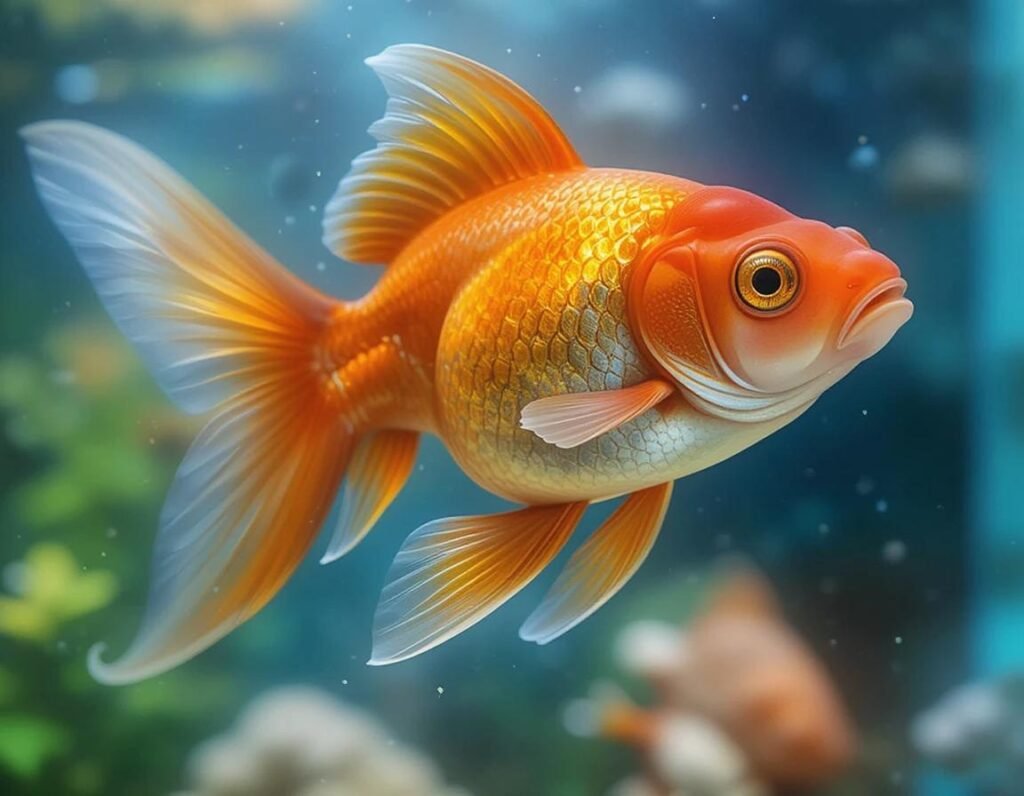
Best Tank for Goldfish: Choosing the Perfect Home for Your Flippered Friend
Goldfish, with their charming personalities and shimmering scales, can be the stars of your home. But like all stars, they need a comfortable place to shine—so, let’s talk about the best tank for goldfish!
If you’re new to goldfish care, you might think a small bowl will do. After all, they’re small, right? But here’s the truth: goldfish grow quickly, and a bowl is like putting a toddler in a closet. You wouldn’t do that, would you? So, let’s dive into the tank requirements that will keep your finned friend happy and healthy.
1. Size Matters: Bigger is Better!
First and foremost, goldfish need space. The bigger the tank, the better the swimming, and the less cleaning you’ll have to do (so, bonus!). For one goldfish, aim for at least a 20-gallon tank. Yes, you read that right. Not a tiny bowl, not even a 10-gallon tank. A 20-gallon tank gives your goldfish plenty of room to explore and grow into the majestic creature it’s meant to be.
If you plan on adding more goldfish (or other aquatic friends), make sure to increase the tank size. For every additional goldfish, bump up the tank by another 10 gallons. Trust me, your fish will thank you for it. They may not say it out loud, but you’ll notice the happiness in their tiny, glittering eyes.
2. Filtration: A Clean Tank is a Happy Tank
Goldfish are producing machines when it comes to waste. To keep your tank water clean (and your goldfish not swimming through their own personal swamp), invest in a good filtration system. Look for a filter that can handle 4-5 times the size of your tank per hour in water turnover. So, if you have a 20-gallon tank, get a filter that can process at least 80 gallons of water each hour. A good filter means less work for you and happier goldfish—everyone wins!
3. Temperature and Water Conditions: Keep It Comfortable
Goldfish aren’t picky about the temperature, but they do like it steady. A heater isn’t necessary unless your home gets really cold (or you live in an igloo). Aim to keep the water temperature between 65°F and 75°F (18°C – 24°C). Goldfish thrive best in slightly cooler water—don’t let them overheat, they’re not fans of hot tubs!
Also, make sure to check the water pH. Goldfish prefer slightly alkaline water with a pH of around 7.0–8.4. A simple test kit can help you keep track of this, so your fish don’t feel like they’re living in a spa.
Most searched keywords: Goldfish water temperature, Goldfish tank pH, Water quality for goldfish.
4. Decoration and Substrate: Give Them a Playground
Goldfish love to explore their homes, so make sure their tank has decorations. Add some plants, rocks, or even a fun castle (for dramatic effect). But avoid anything too small that could be swallowed or sharp edges that could hurt your goldfish.
You can also add gravel or sand at the bottom of the tank. Just remember, goldfish are bottom feeders, so they’ll spend a lot of time rooting around in the substrate. Make sure it’s safe, and don’t use any rocks with sharp edges that could injure them.
And, a little humor for you: Your goldfish might not appreciate the cozy little cave you put in there, but they sure will love pretending they’re part of the royal family by swimming through it. Who knew fish had such big egos?
5. Lighting: Make Their Scales Shine!
Goldfish love moderate lighting, so don’t go overboard. A good tank light will not only help you show off your goldfish’s gorgeous orange color but also help plants grow. Just avoid bright, harsh lights that could stress your fish. Keep the light on for about 10-12 hours a day, and your goldfish will thank you for the lovely ambiance.
6. Avoid Overcrowding: More Fish, More Problems
Goldfish can get a little territorial (especially when there’s food involved), so it’s essential not to overcrowd your tank. One goldfish per 20 gallons is a good rule to follow. If you’ve got a small tank, you may want to stick with just one fish for a while.
7. Goldfish Tank Maintenance: Keeping It Sparkling Clean
Now, before you start thinking about putting in the perfect decorations and arranging the plants like a professional interior designer, let’s talk about tank maintenance. A beautiful tank isn’t much if it’s constantly cloudy or smelly. Regular cleaning is essential to keep your goldfish’s home fresh and inviting.
Here’s the deal: do a partial water change (about 25-30%) once a week. This helps remove toxins, clean out waste, and keep the water quality high. While you’re at it, vacuum the substrate to get rid of uneaten food and fish waste (goldfish aren’t exactly neat eaters).
And here’s a fun fact: your goldfish might give you side-eye when you’re cleaning their tank, but they secretly appreciate it. They just don’t know how to show it, but their vibrant colors and energetic swimming are a dead giveaway.
8. What to Feed Your Goldfish: The Good Stuff
You’ve got your tank all set up and ready, but what about goldfish food? You can’t just throw in some breadcrumbs (trust me, they won’t thank you). Goldfish need a balanced diet to stay healthy, so feed them a mix of high-quality pellets, flakes, and occasional treats like freeze-dried worms or vegetables (think peas or spinach). But, remember—goldfish have a bottomless pit for a stomach, so don’t overfeed them. Overfeeding can lead to water pollution and even health problems for your fish.
Also, keep in mind that goldfish don’t have stomachs like humans, so their digestion is continuous. So, try feeding them small portions throughout the day instead of one large meal. After all, you wouldn’t want to eat a buffet in one sitting, would you?
9. Goldfish Tank Troubleshooting: Common Problems and How to Solve Them
No matter how much you prepare, things can sometimes go awry. But don’t panic! Here are a few common problems and their fixes:
- Cloudy water: This can happen when your filter isn’t doing its job or if you’ve overfed your fish. Solution: Clean the tank, do a water change, and make sure the filter is up to snuff.
- Algae growth: Algae love tanks with too much sunlight. Solution: Lower the light intensity or reduce the time it’s on each day. You can also add algae-eating snails or fish to help keep things in check.
- Swim bladder issues: If your goldfish is swimming awkwardly, it could have swim bladder problems. Solution: Avoid overfeeding, especially with high-protein foods, and give your goldfish some time to recover in a separate tank if needed.
Most searched keywords: Goldfish water problems, Cloudy goldfish tank, Goldfish algae issues, Swim bladder problem in goldfish.
10. Goldfish Tank Setup: A Quick Checklist
To wrap things up and make sure you’ve got everything covered, here’s a quick checklist for setting up the best tank for your goldfish:
- Tank size: Minimum 20 gallons for one fish.
- Filter: One that can handle 4-5 times the tank’s volume per hour.
- Heater: Only if your home gets very cold (otherwise, it’s optional).
- Substrate: Gravel or sand (nothing sharp).
- Decorations: Plants, rocks, or caves (avoid small, swallowable items).
- Lighting: Moderate, 10-12 hours a day.
- Maintenance: Regular water changes and cleaning.
- Food: High-quality pellets, flakes, and occasional treats.
And there you have it! With the right tank setup, your goldfish will be swimming happily in its own little world, showing off its beautiful colors and maybe even doing a little fishy dance when you’re not looking.
So, what are you waiting for? Grab that tank, set it up, and get ready to welcome a shiny, happy goldfish into your life. It’s like having a tiny underwater unicorn right in your living room. What’s not to love?

FAQs About the Best Tank for Goldfish
1. How big should a tank be for a goldfish?
Answer: single goldfish needs at least a 20-gallon tank. As they grow quickly, they need plenty of space to thrive. For every additional goldfish, add 10 more gallons to the tank. Bigger is always better!
2. Can I keep a goldfish in a bowl?
Answer: While it may seem like a cute idea, no—goldfish should not be kept in a bowl. They need ample space to swim and grow, and a bowl is too small for them. A properly sized tank is essential for their health.
3. Do goldfish need a heater in their tank?
Answer: Goldfish prefer cooler water (65-75°F or 18-24°C), so most homes won’t need a heater. However, if your home is particularly cold, a heater can help maintain a stable temperature for your fish.
4. How often should I clean my goldfish tank?
Answer: You should do a partial water change (around 25-30%) once a week. This helps keep the water fresh and removes waste buildup. Clean the tank, filter, and substrate to maintain good water quality.
5. Can goldfish live with other fish?
Answer: Yes, goldfish can live with other calm and non-aggressive fish, but avoid adding fish that are smaller, as they may get bullied or eaten. Always ensure there’s enough space for everyone to swim comfortably.
6. What kind of filter do I need for a goldfish tank?
Answer: Goldfish are messy eaters, so you’ll need a filter that can handle 4-5 times the tank volume per hour. For a 20-gallon tank, a filter that processes at least 80 gallons of water per hour is ideal. A good filter helps keep the water clean and reduces maintenance.
7. How much should I feed my goldfish?
Answer: Goldfish are bottomless pits, but don’t overfeed them! Feed them small portions 2-3 times a day. Make sure they eat everything within 2-3 minutes to avoid polluting the water.
8. Why is my goldfish’s water cloudy?
Answer: Cloudy water can be a sign of poor filtration or overfeeding. It’s essential to clean the tank and do a water change. If the filter isn’t strong enough, consider upgrading to a better one.
9. How can I make my goldfish tank more interesting?
Answer: Goldfish love to explore! Add some plants, rocks, or decorative caves for them to swim around. Just make sure everything is safe—avoid sharp edges or tiny objects they could swallow.
10. What’s the ideal pH level for a goldfish tank?
Answer: Goldfish prefer slightly alkaline water, with a pH range between 7.0 and 8.4. Use a water test kit to monitor and maintain these levels.
11. Can I use tap water for my goldfish tank?
Answer: Yes, tap water is fine for goldfish, but you should always dechlorinate it first. Chlorine in tap water can harm your fish, so use a water conditioner to remove it before adding the water to the tank.
12. Do I need a special light for a goldfish tank?
Answer: Goldfish don’t require bright, harsh lighting. A moderate light will help showcase their beautiful colors and keep any plants in the tank healthy. Keep the light on for about 10-12 hours a day and turn it off at night to give them a proper rest.
13. Can goldfish live in a 10-gallon tank?
Answer: A 10-gallon tank might work for a very small goldfish, but it is not recommended for long-term care. A 20-gallon tank is the minimum size for one goldfish, and larger is always better to ensure your fish’s growth and well-being.
14. What kind of substrate is best for a goldfish tank?
Answer: A smooth gravel or sand substrate is ideal for goldfish. Avoid anything sharp or small that could hurt your goldfish or be swallowed. Make sure the substrate is easy to clean, as goldfish often dig around in it.
15. How can I prevent algae growth in my goldfish tank?
Answer: Algae love bright light and excess nutrients. To keep algae at bay, reduce the amount of light your tank gets each day, and do regular water changes. You can also add algae-eating snails or fish to help control algae.
By keeping these answers in mind, you’ll be well on your way to setting up the perfect home for your goldfish, ensuring they stay healthy, happy, and vibrant for years to come. Happy fish-keeping!


